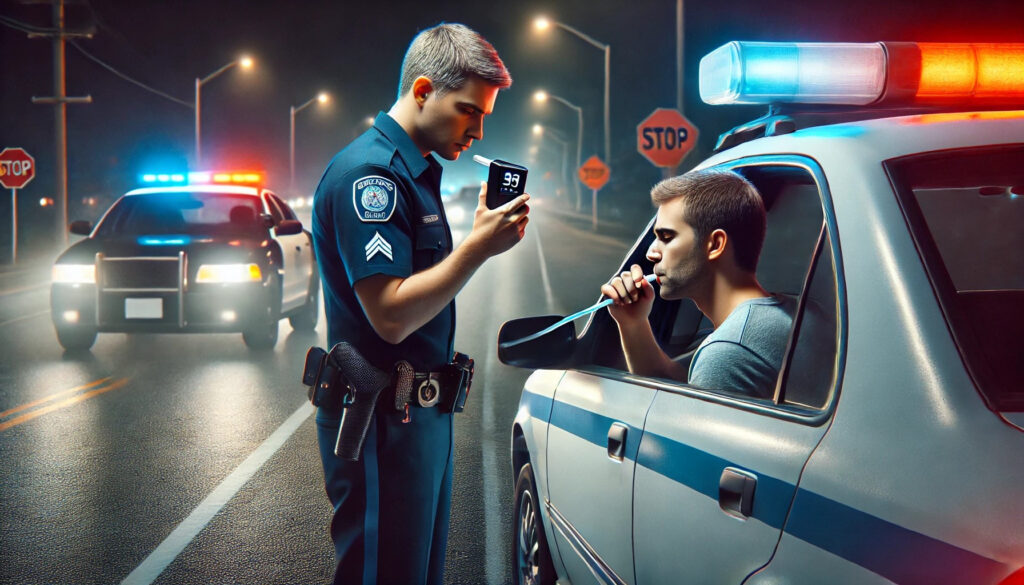Key Takeaways
- Alcohol-related traffic offenses significantly influence road safety policies and enforcement strategies.
- Immediate license suspension and ignition interlock devices are effective deterrents against impaired driving.
- Lowering legal blood alcohol concentration (BAC) limits has been associated with reductions in alcohol-related crashes.
- Technological advancements, such as in-vehicle alcohol detection systems, are emerging tools in preventing impaired driving.
The Impact of Alcohol-Related Traffic Offenses on Road Safety
Alcohol-impaired driving remains a significant public health concern, impacting countless families and communities each year. In 2023 alone, an alarming 12,429 lives were lost in drunk-driving crashes across the United States, representing nearly 30% of all traffic-related deaths. In light of these sobering statistics, the expertise of seasoned legal professionals—like those at Sloan Law Office—becomes vital for individuals facing DWI/DUI charges. Their support helps clients understand and manage the legal process and underscores the broader importance of accountability and prevention in curbing repeat offenses. For more information or legal guidance, visit https://sloanlawkc.com/dwi-dui-lawyer/.
Alcohol-related traffic offenses drive significant reform in both policy and practice, shaping the landscape of road safety measures nationwide. Lawmakers and safety advocates have spent decades refining laws and adopting new strategies to reduce the toll of impaired driving. These efforts have yielded impactful deterrents for would-be offenders and innovative solutions targeting the root causes of impaired driving incidents.
The journey to safer roads is far from over, but ongoing evaluations of policy effectiveness continue to guide lawmakers as they implement proven interventions.
Immediate License Suspension: A Deterrent Against Drunk Driving
One of the most potent legislative measures enacted across many U.S. states is the immediate suspension of a driver’s license following a failed breath test. Research indicates that such laws correlate with a 5% reduction in alcohol-related traffic deaths, a notable impact considering the number of lives potentially saved each year. By removing an offender’s ability to operate a vehicle right away, these laws send a clear message about the seriousness of drunk driving and reinforce swift consequences for risky behavior.
Ignition Interlock Devices: Preventing Repeat Offenses
Another cornerstone in the fight against impaired driving is the deployment of ignition interlock devices (IIDs). These in-car breathalyzers prevent a vehicle from starting unless the driver provides an alcohol-free breath sample. Research demonstrates considerable decreases in repeat offenses among those required to use IIDs, especially when applied to both first-time and repeat offenders. Despite their effectiveness, rates of recidivism may rise when the devices are later removed, emphasizing the value of pairing technological solutions with behavioral interventions and substance abuse rehabilitation programs. States that require ignition interlocks for all those convicted of a DWI/DUI have seen considerable improvements in recidivism rates, as documented by NHTSA’s Impaired Driving Guidelines.
Lowering Legal BAC Limits: A Proactive Approach
Efforts to further discourage impairment behind the wheel have led several states to reevaluate their legal blood alcohol concentration (BAC) thresholds. Utah’s landmark move in 2018 to lower its BAC limit from 0.08% to 0.05% brought a 20% decrease in its fatal crash rate over three years—a compelling demonstration of how stricter legal limits can drive positive change. Advocates argue that these more stringent laws help cultivate a mindset of caution, encouraging motorists to make safer choices before getting behind the wheel.
Technological Innovations: The Future of Impaired Driving Prevention
Technology increasingly underpins modern efforts to curb alcohol-related crashes. Agencies like the National Highway Traffic Safety Administration are developing and testing advanced in-vehicle systems that automatically detect driver impairment. When fully integrated, these technologies could prevent a vehicle from operating while the driver is intoxicated, rendering the roadways safer for everyone. The shift toward mandatory impaired-drive prevention technology in newly manufactured vehicles marks a significant evolution in how society approaches traffic safety. For more information, refer to the article US agency takes first step toward requiring new cars to prevent drunk or impaired driving.
Public Awareness and Education: Changing Behaviors
Public education campaigns remain a vital complement to policy enforcement and technological breakthroughs. Initiatives like “Drive Sober or Get Pulled Over” resonate by fostering a culture that stigmatizes impaired driving and elevates personal accountability. These efforts, amplified through media and community partnerships, inform the public about impaired driving’s risks and the severe penalties at stake, working in tandem with legal reforms to reinforce safer driving habits at every level.
Conclusion
The ongoing battle against alcohol-related traffic offenses is multifaceted, involving the collaboration of lawmakers, law enforcement, medical and safety experts, legal professionals, and the community. Approaches that include immediate license suspensions, ignition interlock devices, reduced BAC limits, and emerging technologies—supported by sustained educational outreach—represent the pillars of America’s commitment to safer roads. Through vigilance, innovation, and a collective responsibility to safety, the risks of impaired driving can be further minimized, saving thousands of lives each year.








